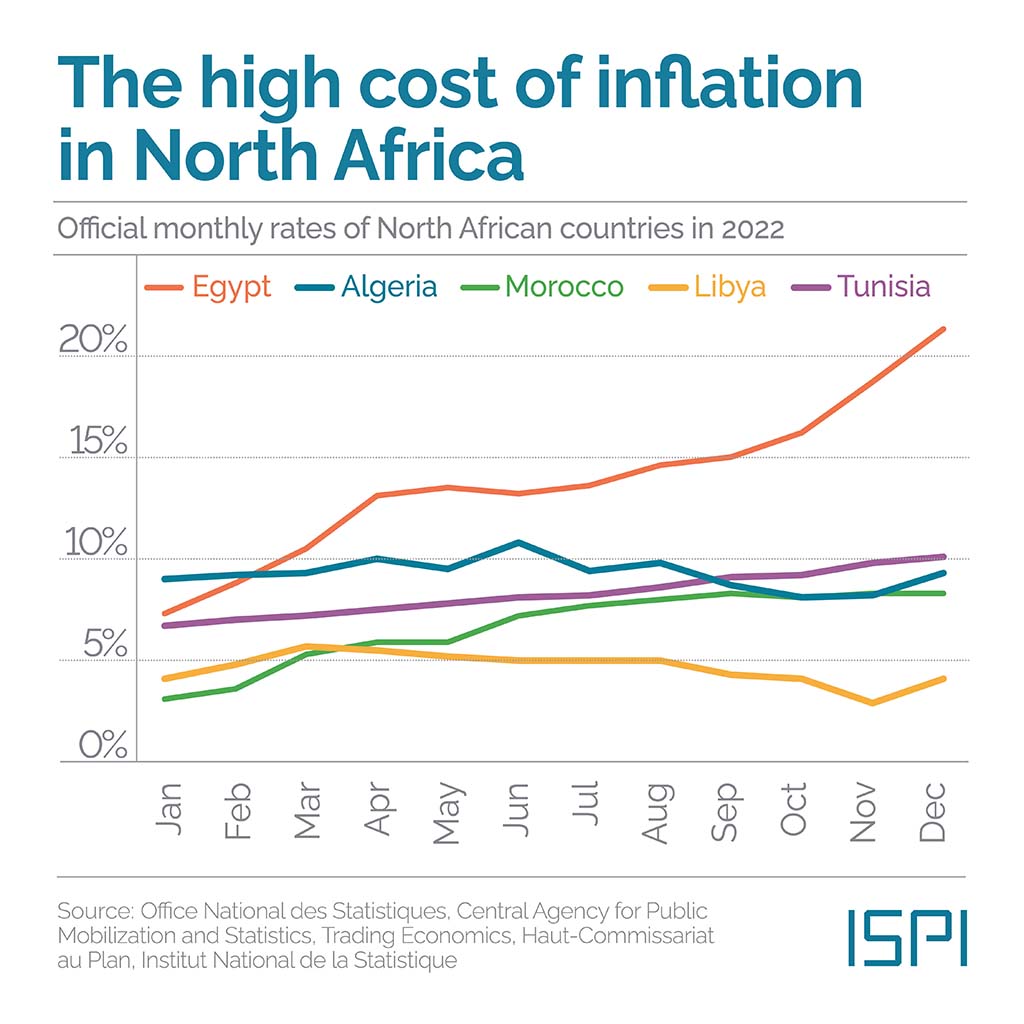Report on Arts Education Advocacy and its Alignment with Sustainable Development Goals
Introduction: The Role of Veronica Alvarez and Create CA
This report examines the work of Veronica Alvarez, Executive Director of Create CA, through the lens of the United Nations Sustainable Development Goals (SDGs). Ms. Alvarez’s professional mission and personal history demonstrate a profound commitment to advancing quality education, reducing systemic inequalities, and alleviating poverty. Her leadership at one of California’s foremost arts education advocacy organizations centers on the principle that access to the arts is a fundamental component of social justice and equitable development.
Addressing Inequalities and Promoting Inclusive Education (SDG 4 & SDG 10)
Championing Equitable Access as Social Justice
The core of Ms. Alvarez’s advocacy directly addresses SDG 10 (Reduced Inequalities) and SDG 4 (Quality Education). Her work is founded on the belief that arts education is a critical tool for social equity. “I believe access to the arts is a social justice issue,” states Alvarez, highlighting the systemic failure where “students that have the most need do not get equal access and opportunities.” This focus on marginalized communities is a direct effort to ensure inclusive and equitable quality education for all.
Initiatives for Vulnerable Student Populations
Ms. Alvarez’s career has been dedicated to creating inclusive spaces within educational and cultural institutions, directly supporting the targets of SDG 10. Her efforts have focused on groups that historically face significant barriers:
- Students from low-income and immigrant families.
- English language learners.
- Students in geographically isolated rural areas.
A notable example of this was her program at the Getty Museum, which utilized visual arts to facilitate language acquisition for migrant workers. By using Cézanne’s “Still Life with Apples” instead of simple flashcards, the program fostered deeper engagement and more meaningful conversations, demonstrating an innovative approach to inclusive learning.
Education as a Pathway from Poverty (SDG 1 & SDG 8)
Personal Trajectory and Foundational Beliefs
Ms. Alvarez’s personal journey from a low-income immigrant family to a leader with a doctorate in education exemplifies the transformative power of learning, a cornerstone of SDG 1 (No Poverty). Her father was an agricultural worker and her mother a house cleaner. Reflecting on her past, she states, “Education was my path out of poverty. That was always my thing. I loved school.” This experience fuels her passion to provide similar pathways for today’s students, linking quality education directly to poverty eradication and the potential for decent work (SDG 8).
Fostering Skills for Sustainable Economic Growth
The advocacy for arts education supports SDG 8 (Decent Work and Economic Growth) by cultivating essential skills for future economies. Ms. Alvarez emphasizes that art is not a luxury but a necessity for cognitive development. “The arts are essential to students’ creativity,” she notes. “When students can’t access the traditional curriculum, the arts allow them to express themselves, their feelings, and tell their stories.” This development of creativity, critical thinking, and self-expression prepares students for a diverse range of future employment opportunities.
Strengthening Institutions and Policy Implementation (SDG 16)
Advocacy and Governance: The Case of Proposition 28
Create CA, under Ms. Alvarez’s leadership, functions as a strong institution advocating for justice and effective governance, in line with SDG 16 (Peace, Justice and Strong Institutions). A primary focus is the implementation of Proposition 28, California’s arts education mandate. The organization plays a critical role in ensuring that these public funds are utilized as intended to expand arts access equitably across the state.
Challenges in Resource Allocation
The work of ensuring fair implementation highlights significant challenges in governance and resource distribution. Ms. Alvarez points out the complexities that require institutional oversight:
- Accountability: Ensuring that the nearly $1 billion in funding is spent correctly and transparently by school districts.
- Sufficiency: Communicating that while the total funding appears large, it is often insufficient when distributed among California’s 6 million students.
- Equity: Addressing disparities where funds allocated to rural or smaller districts may not be enough to hire even a single full-time arts teacher.
Conclusion: The Universal Value of Arts Education for Sustainable Development
The work championed by Veronica Alvarez and Create CA underscores that equitable arts education is not an isolated issue but a critical driver for achieving multiple Sustainable Development Goals. By framing arts access as a matter of social justice, the organization directly contributes to reducing inequalities (SDG 10) and providing quality education (SDG 4). This educational foundation, in turn, offers a pathway out of poverty (SDG 1) and fosters skills for future economic growth (SDG 8). Through diligent policy advocacy and a focus on institutional integrity (SDG 16), the mission to bring arts to every child reinforces the interconnectedness of human development, well-being, and a sustainable future.
SDGs Addressed in the Article
- SDG 1: No Poverty – The article highlights the personal story of Veronica Alvarez, whose family was poor and who saw education as her way out of poverty.
- SDG 4: Quality Education – This is the central theme of the article, focusing on the importance of arts education, equitable access for all students, and the role of education in personal development and social mobility.
- SDG 10: Reduced Inequalities – The article repeatedly emphasizes the fight for equity and social justice, particularly in providing educational opportunities to marginalized groups, such as undocumented immigrants, students from low-income families, and those in underfunded school districts.
Specific SDG Targets Identified
SDG 1: No Poverty
-
Target 1.2: By 2030, reduce at least by half the proportion of men, women and children of all ages living in poverty in all its dimensions according to national definitions.
The article supports this target through Veronica Alvarez’s personal narrative. She states, “We were so poor, I knew not to ask for much,” and explicitly identifies education as the mechanism for escaping this condition: “Education was my path out of poverty.” This demonstrates the role of quality education in breaking the cycle of poverty.
SDG 4: Quality Education
-
Target 4.5: By 2030, eliminate gender disparities in education and ensure equal access to all levels of education and vocational training for the vulnerable, including persons with disabilities, indigenous peoples and children in vulnerable situations.
This target is central to the article’s message. Alvarez’s mission is framed as a “social justice issue,” and she states, “Unfortunately, students that have the most need do not get equal access and opportunities.” Her experience as an “undocumented immigrant” and her work with “migrant workers” directly address the need for equal access for vulnerable populations. The entire purpose of her organization, Create CA, is to ensure that arts education is available to “everyone, not just the lucky few.” -
Target 4.7: By 2030, ensure that all learners acquire the knowledge and skills needed to promote sustainable development, including, among others, through education for sustainable development and sustainable lifestyles, human rights, gender equality, promotion of a culture of peace and non-violence, global citizenship and appreciation of cultural diversity and of culture’s contribution to sustainable development.
The article connects arts education to broader human and cultural understanding. Alvarez describes art as “the tether that connects us to our shared human heritage” and a “bridge to the past that all should be encouraged to cross.” She notes that art allows us “to connect across time and culture” and helps students “express themselves, their feelings, and tell their stories.” This directly aligns with the target’s goal of appreciating cultural diversity and culture’s contribution to development.
SDG 10: Reduced Inequalities
-
Target 10.2: By 2030, empower and promote the social, economic and political inclusion of all, irrespective of age, sex, disability, race, ethnicity, origin, religion or economic or other status.
This target is reflected in Alvarez’s core passion, which she describes as “always been about access and equity, making a place for everyone.” Her work aims to dismantle barriers for students from different backgrounds, stemming from her own experience as an immigrant who felt the “sting of being an undocumented immigrant.” Her advocacy ensures that students, regardless of their background, can participate in the arts. -
Target 10.3: Ensure equal opportunity and reduce inequalities of outcome, including by eliminating discriminatory laws, policies and practices and promoting appropriate legislation, policies and action in this regard.
The article explicitly mentions the work of Create CA in navigating and implementing Proposition 28, described as “the state’s arts education mandate.” The organization’s efforts to ensure “Prop. 28 funds are spent as they were intended” and its push “for more funding” are direct actions aimed at promoting legislation and policies that reduce inequality in educational opportunities.
Indicators for Measuring Progress
For Target 4.5 (Equal Access to Education)
- Indicator: Number of art teachers in schools, especially in rural areas. The article implies this is a key metric by highlighting a major challenge: “when we parcel out what that means to individual school districts, especially in rural areas, sometimes the funds aren’t sufficient to hire one art teacher.”
- Indicator: Proportion of students from vulnerable groups with access to arts education. This is implied by the focus on ensuring “students that have the most need” get “equal access and opportunities.” Measuring the participation rates of these students would be a direct indicator of progress.
For Target 4.7 (Education for Sustainable Development and Culture)
- Indicator: Level of student engagement in curriculum that integrates arts. The article provides a qualitative indicator through the example of using Cézanne’s art to teach English to migrant workers. The result was that “the conversations suddenly got so much more interesting” and “We got the students to really engage.” This suggests that student engagement can be a measure of the effectiveness of culturally-integrated education.
For Target 10.3 (Ensure Equal Opportunity)
- Indicator: Allocation and sufficiency of dedicated funds for arts education. The article directly points to this with the discussion of Proposition 28 funds. It notes that “while a billion dollars may sound like a lot of money,” it may not be enough for California’s “6 million students.” Tracking the distribution and impact of these funds is a clear indicator.
Summary of SDGs, Targets, and Indicators
| SDGs | Targets | Indicators |
|---|---|---|
| SDG 1: No Poverty | 1.2: Reduce poverty in all its dimensions. | Implied: Rate of poverty reduction through access to quality education, as exemplified by the statement “Education was my path out of poverty.” |
| SDG 4: Quality Education | 4.5: Ensure equal access to all levels of education for the vulnerable. |
|
| 4.7: Ensure all learners acquire knowledge and skills for sustainable development, including appreciation of cultural diversity. | Qualitative measure of student engagement when arts are integrated into the curriculum (e.g., the Cézanne example). | |
| SDG 10: Reduced Inequalities | 10.2: Empower and promote the social, economic and political inclusion of all. | Implied: Participation rates in arts programs across different ethnic and economic groups, reflecting the goal of “making a place for everyone.” |
| 10.3: Ensure equal opportunity and reduce inequalities of outcome through policies and legislation. | Allocation and sufficiency of funds from policies like Proposition 28 to ensure they are spent as intended to provide equal access. |
Source: edsource.org







